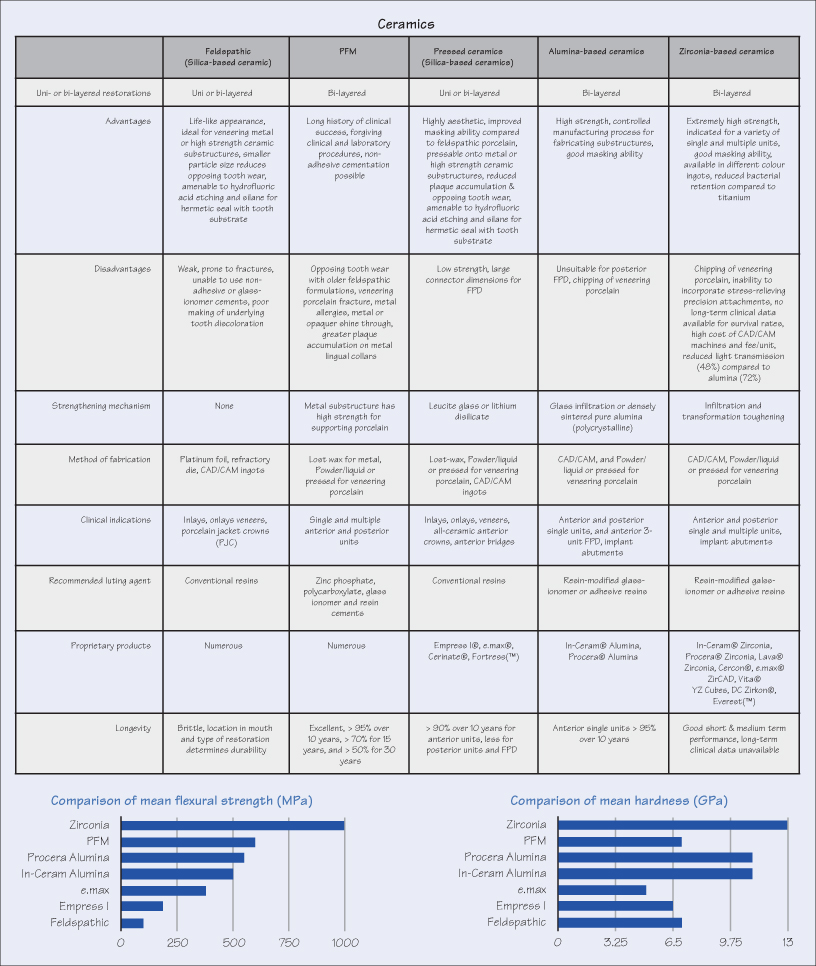31
Ceramic Materials

Ceramics are a significant class of indirect restorative materials that are revolutionising contemporary dentistry. The main reason is their lifelike appearance compared to metal-ceramic or all metal restorations.
Overview
Ceramics are inherently brittle materials and susceptible to fracture. Microscopic imperfections within the material are termed Griffith flaws, which grow into cracks, and if unimpeded, lead to catastrophic fracture of the ceramic. The cracks are propagated by the hostile oral environment: dynamic (occlusal forces) and humid (stress corrosion). Furthermore, static fatigue is time-dependent, which eventually results in breakage. Many strengthening mechanisms are used for halting fracture propagation including reinforcement and infiltration with glasses as well as phase transformation toughening. Preventing fractures also depends on the clinical scenario, method of fabrication of the restoration, and the manufacturing technique and strengthening process of a specific ceramic.
For the reasons cited above, in order for ceramics to survive in the oral cavity, they must be supported, either by the natural tooth substrate or an artificial substructure. Two types of ceramic restorations are possible: first, a uni-layer restoration that is entirely composed of ceramic and gains support from the underlying tooth substrate, and second, a bi-layer restoration with a substructure to support the veneering porcelain. The substructure can be of either metal, or a dense high strength ceramic.
Classification
Many classifications have been proposed to categorise ceramics depending on material composition (type of matrix and filler), aesthetics properties (translucency), strengthening process, method of fabrication (manual or milling), and manufacturing process (powder/liquid or ingots), etc. The simplest/>
Stay updated, free dental videos. Join our Telegram channel

VIDEdental - Online dental courses


